|
If you are having trouble viewing this email, click here to display it in your web browser.
|

|
|
|
|
Reminder HAVC&R Congress in Düsseldorf, June 10 – 11
NOCOLOK® App 3.0
New in the NOCOLOK®-Team: Nils Steenfatt
Invitation EABS Technical Training Seminar
Upcoming Brazing Events 2015
NOCOLOK® Survey 2014 – Results
Flux Paints and Pastes - Part 1
|
|
|
Reminder HAVC&R Congress in Düsseldorf, June 10 – 11
|
|
|
This week the 4th International Congress and Exhibition on Aluminium Heat Exchanger Technologies for HVAC&R will take place in Düsseldorf, Germany.
On 10th – 11th June 2015, the 4th International Congress will be again organised by DVS – German Welding Society – and will take place at the Radisson Blu Scandinavia Hotel, Düsseldorf. The NOCOLOK® Team is taking part and we cordially invite you to attend this 2-day-event, where expert authors will present papers about aluminium heat exchanger technologies.
You can find more information, registration and hotel reservation on the website.
|
|
|
|
|
The NOCOLOK® app has received a facelift. Straightforward design, ease of use, adaptation to the current branding - the NOCOLOK® App has been thoroughly revised and in the handling improved. All NOCOLOK® products and tools are easy to find, as are the packaging and packaging options. Calculators for flux load and flux slurry assist by speedy calculation of amounts and concentrations. A real reference book for all technical terms is the NOCOLOK® Encyclopaedia. New are the topics flux paints and pastes. The update is automatically displayed - upload the new version of NOCOLOK® app on your smartphone.
|
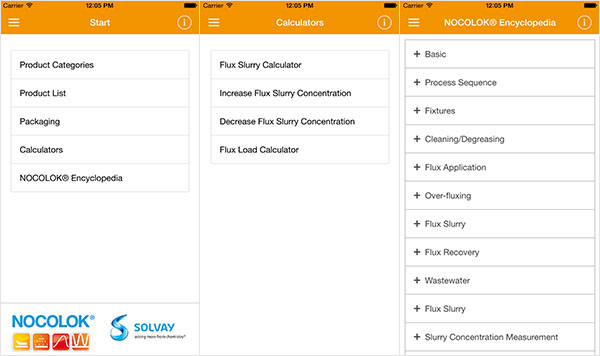
|
|
You don’t know the NOCOLOK® app yet?
Then it's time you did!
|
iOs
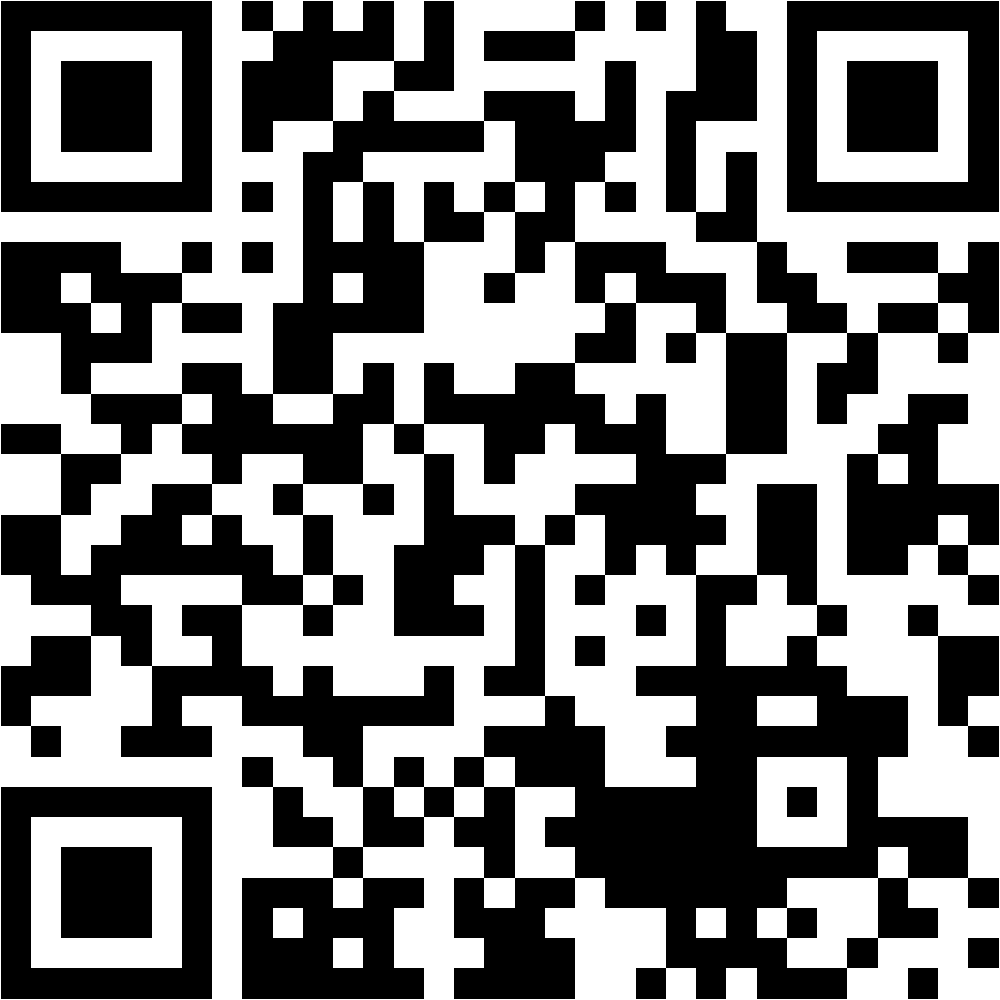 |
|
Android 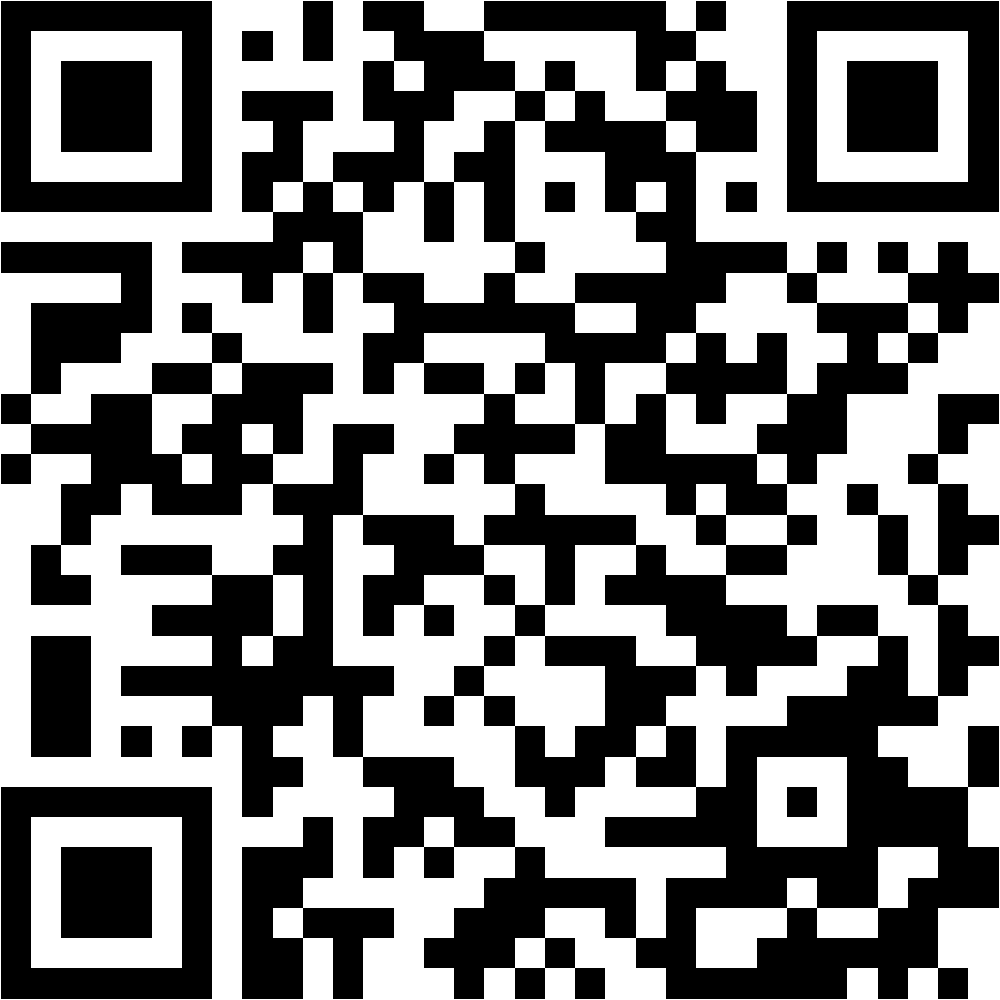
|
| |
|
|
New in the NOCOLOK®-Team: Nils Steenfatt
|
|

Nils Steenfatt is part of the NOCOLOK® team since autumn 2014. Like Claudia Schreeck, he comes from FLUX Schweiß-und Lötstoffe and now works for the Solvay Flux GmbH, headquartered in Garbsen near Hannover. Steenfatt has worked since 2002 in the chemical industry in sales and purchasing - since autumn 2010 at FLUX as Senior Sales and Purchasing Manager with worldwide responsibilities. In Solvay Flux he is responsible for the areas EMEA and India as Marketing & Sales Manager. "The intensive contact with our NOCOLOK® customers is very important to me because it creates confidence in the mutual reliability," emphasizes Steenfatt.
In his spare time, the 39-year-old father of three daughters covers many kilometres by running. Following the motto "running makes you happy and clears your head" he likes to run in natural surroundings. His favourite track is located in Tokyo around the Imperial Palace. If his family leaves him any time, Steenfatt dedicates it to his "old" passion: photography.
|
|
|
Invitation EABS Technical Training Seminar
|
|
|
EABS and Solvay Special Chem announce the thirteenth annual presentation of their joint technical training seminar.
Dates: 13th and 14th October 2015
|

|
Purpose of the Seminar:
This technical training seminar will be presented in English at the Conference Centre and laboratories of SOLVAY GmbH, in Hannover, Germany. It will provide information concerning the manufacturing practices commonly used for brazing operations and, in particular, will address the three fundamental aspects of the industrial-scale brazing of aluminium.
These are:
- The flame brazing of aluminium.
- The Controlled Atmosphere Brazing (CAB) of aluminium heat exchangers with non-corrosive fluxes (NOCOLOK® Flux).
- The methodology of how to ensure that the brazing process is selected, indeed, the one that represents ‘best practice’.
Here you can find the detailed seminar programme and registration.
|
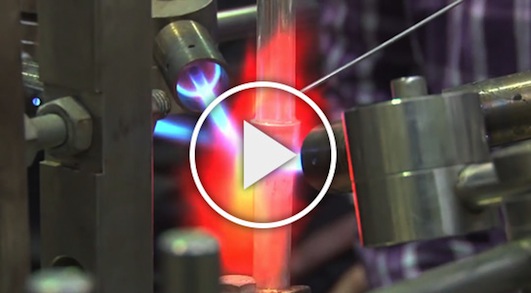
|
|
Watch the video of the EABS Technical Training Seminar
|
|
|
Upcoming Brazing Events 2015
|
|
|
July 16th
NOCOLOK® Aluminium Brazing Seminar
Sofitel Sukhumvit Bangkok, Thailand
Email: ingredients@jjsea.com
September 29th - October 1st
SAE 2015 Thermal Management Systems Symposium
Troy Marriott - Troy, Michigan, USA
www.sae.org
November 25th – 26th
2015 Gränges India Technical Seminar
Chennai, India on two half days of 25th November and 26th November 2015.
|
|
|
NOCOLOK® Survey 2014 – Results
|
|
|
Thank you for the many positive reviews we received in 2014. Almost 95% of our customers would recommend us. Especially highly rated are the points "delivery of goods" and "Solvay's sales representatives". Here are some comments from our customers:
"We buy only NOCOLOK® Flux and cannot recommend any other."
"Solvay is the no. 1 brand and high quality."
"Excellent support all the time from Dr. Orman Leszek, Dr. Hans-Walter Swidersky and Sanjay Maheshwari."
Overall, we were evaluated as above average.
The NOCOLOK® Survey will continue in 2015 and all those who gave their vote last year can participate again this year. We are happy to hear any critique - tell us how we can become even better.

Among all participants 2015, we are raffling an iPad Air 2, 16 GB/WLAN, silver.
Please take 5 minutes of your time to give your vote!
|
|
|
Flux Paints and Pastes - Part 1
|
|
|
Concept and Definitions
In addition to the standard methods of applying flux to heat exchanger components (wet fluxing and dry fluxing), there is an increasing trend to using sophisticated flux formulations for selective pre-fluxing of components and/or localized fluxing of complicated geometries. The driving force behind this trend is multi-faceted: heat exchanger manufacturers are seeking to out-source flux application, to partially or completely eliminate certain process elements (fluxer, degreaser) and the movement away from seam-welded and extruded tubes to folded tube technology.
Before describing flux pastes and paints in more detail, a few definitions are noteworthy:
- Flux Paint: Mixture of various powders mixed with a binder which is applied to as substrate in a thin layer. The coating is then converted to a solid film during a subsequent drying (curing) operation thereby adhering to the substrate.
- Paste: Any mixture of various powders mixed with a carrier. Generally used for application where flux and/or alloy is required for a target location on a heat exchanger assembly or component. The viscosity is adapted to fit the application.
- Binder: Complex organic compounds that upon curing, reacts to provide adhesion of flux particles to the coated surface.
- Additives: Organic or inorganic substances used to modify the rheological properties of a fluid.
- Curing: Drying of the flux painted parts usually with hot air (150°C). Liquid carrier, i.e., water and/or organic solvent(s) evaporate and the binder reacts to provide adhesion.
- Adhesion: Qualitative or quantitative measure by which bonding strength of the flux particles to the coated surface is determined.
- De-binding: Process of binder removal from the painted surface either in air or in the furnace atmosphere by the treatment with high temperature.
- Viscosity: a measure of resistance to gradual deformation by shear stress, corresponding to the informal concept of thickness.
- Thermogravimetric Analysis (TGA): A technique in which the mass of a substance is monitored as a function of temperature or time as the sample specimen is subjected to a controlled temperature program in a controlled atmosphere.
Paint Flux Characteristics - Viscosity
Viscosity is an essential parameter for the paint flux and is used to determine a suitable application process. A change in viscosity usually requires a change in the design of the application technique or equipment. All paste and paints used in fluxing are non-Newtonian fluids, meaning that the correlation between the applied shear stress and the shear rate is not linear. Many liquids, including paints are typical shear thinning fluids whose viscosities decreases non-linearly with shear stress. When providing a viscosity value, the methodology, specific shear rate and temperature must be provided.
|
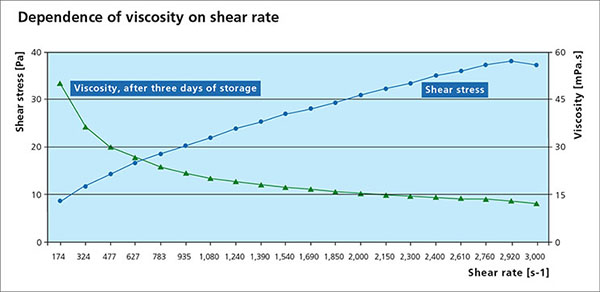
|
|
Settling Behavior
Flux powder has very low solubility in water and organic solvent based paint mixtures. During storage, the solid flux particles will eventually settle out, causing a separation of solids and liquid/carrier. The rate of settling and the ease for remixing is therefore an important practical characteristic. The photo below shows an example of different settling behaviors:
|
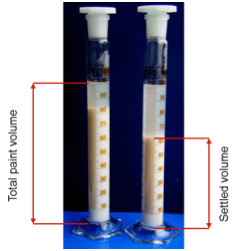
|
|
Note that the higher value of the settled volume at left means a slower process of settling.
The settling rate can be affected by several parameters such as binder concentration, flux solids content, storage time and temperature. To ensure complete homogeneity prior to use, a thorough remixing is necessary. Just shaking the container is usually not sufficient. It is recommended to use of a gyroscopic mixer which rotates the container around two perpendicular axes resulting in intensive material flow. These shear forces ensure optimal mixing without affecting the structure of the material.
Adhesion
The degree of paint flux adhesion varies depending on the heat exchanger manufacturer’s requirements. If paint fluxing is performed off-site and the material needs to be transported over long distances, a higher degree of adhesion is required than if the material is coated in house and simply needs to be transported from one station to the next. The degree of adhesion is typically controlled by the binder concentration in the formulation.
While there are standard methods for measuring adhesion (ASTM D 3359 Standard Methods for Measuring Adhesion by Tape Test), some paint flux users have developed their own in-house methods. The advantage of employing standard methods for measuring adhesion allows for a higher degree of inter-laboratory precision and comparison.
Binder Removal
For successful brazing of paint fluxed aluminum components, the binder must be removed before reaching brazing temperature. In the production process, the paint flux carrier is removed immediately after coating in the dry-off / curing operation. When paint fluxed components are put into the brazing line, the increasing temperature is then responsible for decomposing and removing the binder by evaporation. The temperature range at which the binder is removed is determined by Thermogravimetric Analysis (TGA). With this technique, a simulated braze cycle is used to determine at which temperature the binder is removed. The TGA curves below shows the de-binding temperature for a typical paint flux formulation.
|
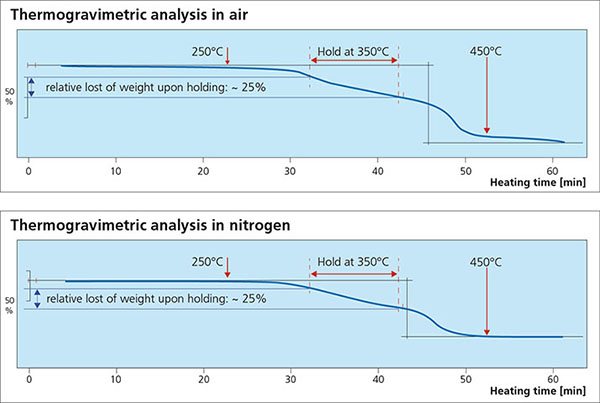
|
|
Note that whether in air or nitrogen, the binder removal temperature is in the range of 250°C to 450°C. This means that in this case, at least part of the binder will be removed in the brazing furnace. In continuous tunnel furnaces, this is not an issue since the binder evaporation products will be swept away by the counter flow of nitrogen. In semi-continuous or batch type furnaces, the potential influence of binder removal on equipment must be individually considered depending on each brazing line design. In most semi-continuous or batch type furnaces, binder removal takes place during the drying or preheating step in the presence of air - at temperatures below 400°C (to avoid formation of high-temperature oxides).
Special consideration must be given to paint fluxed components which are not boldly exposed to the furnace atmosphere. These areas are usually enclosed spaces such as inside manifolds, sandwiched evaporator plates and turbulators for charge air coolers. In these cases, de-binding products may remain trapped in the enclosed spaces and result in discoloration and black carbon residue deposits. In these cases, it may better to sacrifice some adhesion (lower binder concentration) in order to ensure adequate binder removal.
Paint Flux Machines
As the trend towards paint fluxing has increased, so has the sophistication of the paint flux machines. The industry has seen the evolution of paint fluxing from simple hand held paint sprayers, to semi-automatic machines incorporating a degreasing chamber, a paint flux spray chamber and drying/curing chamber. Today, the most sophisticated flux paint spray machines can be fully automated and fully integrated from the stamping operation through to core assembly. Machines with conveyor widths of 1500 mm, conveyor speeds of greater than 3.5 meters/minute which can spray top and bottom and be fully integrated with stamping and assembly are not uncommon. An example of such a machine is shown below:
|
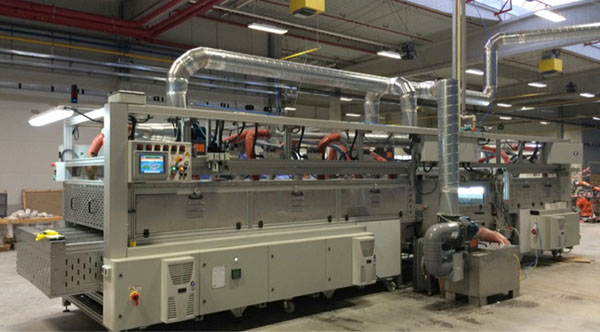
|
|
To be continued…
|
|
|
Brazing Events:
4th International Congress and Exhibition on
Aluminium Heat Exchanger Technologies for HVAC&R
June 10 – 11, 2015
Hotel Radisson Blu Scandinavia
Düsseldorf, Germany
More information
|
|
|
|
Everything you are looking for is right here:
|
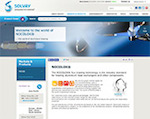
The NOCOLOK® website gives access to all information relating to aluminium brazing, applications, products and technical service:
go to NOCOLOK® Website
|
|
|
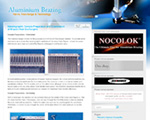
The Aluminium Brazing Blog is the platform for exchanging experiences about aluminium brazing:
go to Aluminium Brazing Blog
|
|
|

Product information, brochures and videos all about NOCOLOK® are available here for download:
go to Download Section
|
|
|
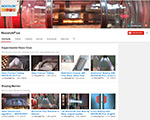
All videos about aluminium brazing on YouTube:
go to YouTube
|
|
|
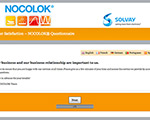
Tell us your opinion:
go to the NOCOLOK® Survey
|
|
|
NOCOLOK® NEWS
Presents information for NOCOLOK® users.
Publisher:
Solvay Fluor GmbH
Hans-Böckler-Allee 20 • 30173 Hannover, Germany
Place: Hannover
Register: Hannover HRB 58647
Managing Directors: Horst Kröger, Dr. Johannes Eicher
Editorial:
Solvay Fluor GmbH
Department SFLU-RBUSI
E-Mail: hans.swidersky@solvay.com
Production:
Ahlers Heinel Werbeagentur GmbH, Hannover
www.ahlersheinel.de
nocolok@ahlersheinel.de
NOCOLOK® is a registered Trademark of Solvay Fluor GmbH
All statements, information, and data given herein are believed to be accurate and reliable but are presented without guarantee, warranty or responsibility of any kind, express or implied. Statements or suggestions concerning possible use of our products are made without representation or warranty that any such use is free of patent infringement, and are not recommandations to infringe any patent. The user should not assume that all safety measures are indicated, or that other measures may not be required. In any case, the user is not exempt from observing all legal, administrative and regulatory procedures relating to the product, personal hygiene, and protection of human welfare and the environment.
|
|
|
|
|
|
|
|